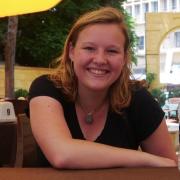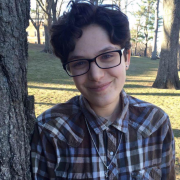Congratulations to our 2020 Rose Olver Prize Winners: Jane Bragdon '20 and Theo Peierls '20E
Image


Jane Bragdon '20
Political Piety and the Nonvisible Presence: How Hürrem Sultan and Nur Jahan Built Waqf, Reputations, and Legacies in the Islamic World
Department of Art and the history of art Honors Thesis
Abstract: Hürrem Sultan (1505-1558), wife of Sultan Suleyman of the Ottoman Empire and Nur Jahan (1577-1645), wife of Jahangir of the Mughal Empire revolutionized the built environment of the cities in their respective empires through their strategic and innovative use of “waqf,” or pious donation. Waqf is an Islamic term, indicating a large endowment like a mosque, school, or hospital made in perpetuity for the common good. Through the institution of waqf, women like Hürrem Sultan and Nur Jahan, whose bodies were not seen by the public, were able to make substantial physical and material public presences in their cities that change the ways one walks around these cities today. Through the medium of public buildings, Hürrem Sultan and Nur Jahan’s legacies became encoded in maps and history, allowed these, women to peripherally interact with the un-familial men, and carved out their own official roles in empires that did not have official government roles for women. Long thought of as subjugated for their pious seclusion, in my thesis I argue the exact opposite: that these two women’s power came directly from their piety, specifically their political use of piety. My argument is based in challenging the common belief among scholars that the buildings and complexes Hürrem and Nur commissioned were evidence of their “maternal” and “womanly” nature. In line with Islamic feminists, I argue for a larger understanding of "public," as including the nonvisible body. I argue that we should see these buildings not as passive endeavors stemming from the caring nature of women, but rather strategic and political choices that both conformed and challenged existing models of contemporaneous building and set the stage for generations of imperial women builders to come.
Image


Theo Peierls '20E
"Transing" Jewish Gender Roles: The Potentials of Emasculation and Deviance
Department of Sexuality, Women's and Gender studies Honors Thesis
Abstract: What are the radical potentials of how Jewish gender is understood, and of Jewish gender deviance? What fears prevent embracing these potentials? Over the course of seven chapters, I show that Jewish masculinity is inherently “transed,” and that there are significant overlaps between a transgender identity and a Jewish male identity due to both external forces of antisemitic stereotypes and internal forces of gender deviation from gentile norms. I explore “Jewish masculinity” as a form of masculinity that is distinct from mainstream understandings of what constitutes manhood, and is structured around the ways in which the Jewish patriarchy creates a manhood built on something other than gentile masculinity, and at times contains aspects of what is often coded as emasculated or feminine. In addition, Jewish men exist in the context of a nebulous understanding of gender, with several significant biblical figures going through “transing” moments, and with a major ritual premised on the idea of devoting oneself to God through an alteration of the genitals. I explore the ways in which assimilation threatens this Jewish gender nonconformity. Embracing a deviant Jewish gender expression and embracing trans inclusion in Jewish spaces can and should go hand in hand, as deviant masculinities hold the potential to disrupt the toxic cisheteropatriarchy that targets marginalized genders. Resisting assimilation, and recognizing the power in gender exploration and deviation, is vital to this potential disruption. Jewish men are made deviant in a gentile context for both their bodies and their gender expressions, and hold the potential to serve as a tool in breaking down binary patriarchal gender assumptions.